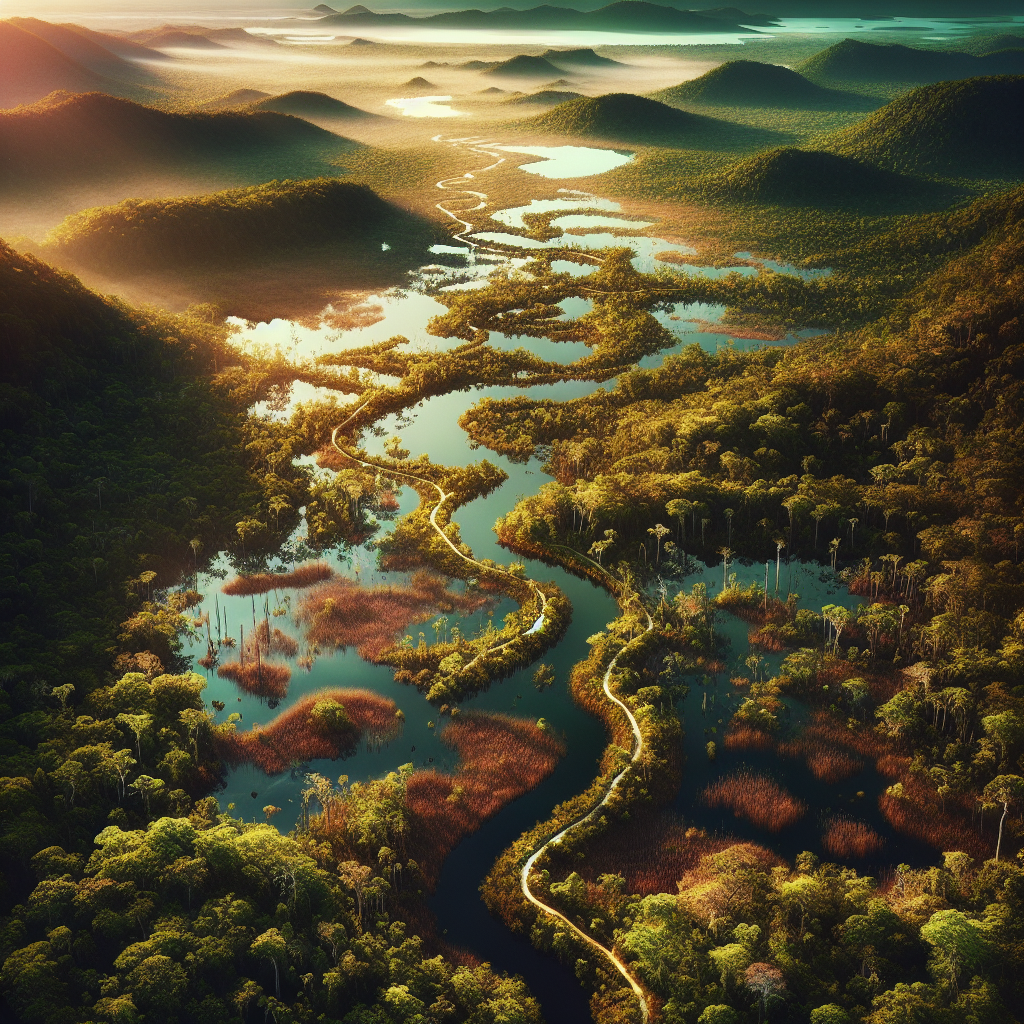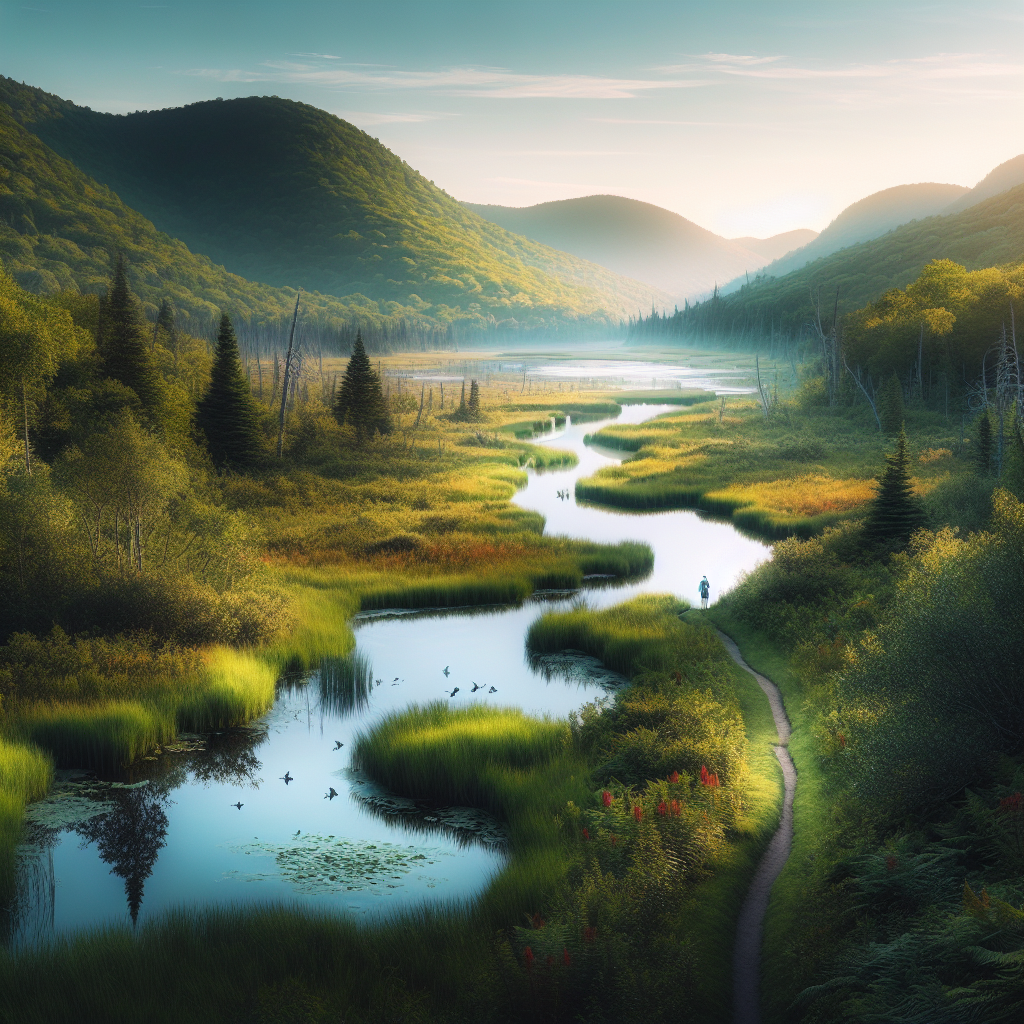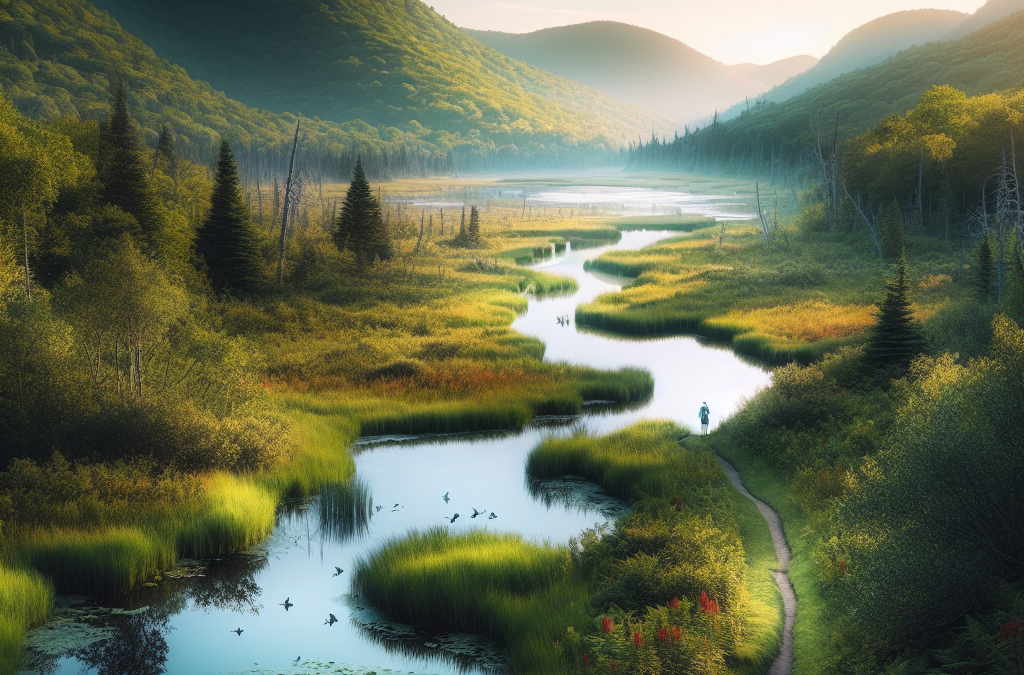Embarking on an adventure through nature can be a transformative experience. Imagine yourself hiking in wetlands – exploring unique ecosystems, unprecedented flora and fauna, and uncovering secrets of untouched beauty. Your journey invites you to comprehend diverse habitats, learn about conservation efforts and engage with extraordinary wildlife species up close. “Hiking In Wetlands: Discovering Unique Ecosystems” is your comprehensive guide to understanding and navigating these captivating landscapes, a virtual invite to step into a world enriched with biological diversity. Each step taken on your exploration through this terrain enriched with ecological wonders deepens your understanding of how vital wetlands are to our planet. So, gear up for an unforgettable escapade that blends learning with the thrill of adventure!

Understanding Wetlands
Before embarking on your wetland hiking adventure, it is crucial to understand what wetlands are and why they are incredibly essential.
Definition of Wetlands
Wetlands, as suggested by their name, are lands that are wet. They contain water throughout the year or at least for a certain period annually. Because of these constant water conditions, wetlands harbor a unique blend of plant and animal species that have adapted to the wet habitat.
Importance of Wetlands
Wetlands are invaluable; they play a vital role in maintaining the earth’s health. They act as natural water filters, reducing pollutants and improving water quality. Wetlands are habitats for a variety of flora and fauna, many of which are scarce and classified as endangered species. Moreover, wetlands prevent flooding by holding excess water during heavy rainfall.
Difference between Wetlands and other Ecosystems
While all ecosystems have their distinct characteristics and importance, wetlands differ due to their saturation levels. Unlike forests, deserts, or meadows, wetlands are naturally ‘waterlogged’ environments. This creates a unique, biodiverse habitat that supports both aquatic and terrestrial life forms.
Preparations Before Hiking in Wetlands
Countless thrilling adventures await you in wetlands. However, your stepping into an unfamiliar environment requires some preparation to ensure a safe and delightful journey.
Choosing the Right Gear
When hiking in wetlands, your gear matters a lot. Go for waterproof boots, breathable clothing, a good-quality backpack, insect repellents, and protective hats. Always have a navigational tool like a topographic map or GPS to avoid being stranded.
Checking Weather Conditions
It’s crucial to check the weather updates before embarking on your journey. Unfavorable weather conditions could turn your pleasant adventure into a difficult experience.
Understanding the Terrain
Each wetland has a unique terrain. Some might be boggy with a soft base, others might be marshy with more solid ground. Understanding the terrain will help you navigate and possibly enjoy the hike more.
Protective Measures against Wildlife
While it’s exciting to watch wetland wildlife, you should remember that you are stepping into their territory. Take all necessary protective measures. Avoid feeding or disturbing wildlife and stay safe.
Exploring Wetland Flora and Fauna
Wetlands boast an unmatched wealth of biodiversity. From the commonly seen species to the rare and endangered ones, wetlands represent a unique combination of life forms.
Common Wetland Plant Species
Many plant species thrive in wetlands, like cattails, of which the tall, cylindrical stalks are a common sight. Duckweeds, water lilies, and reeds also abound in these landscapes.
Animal Habitats in Wetlands
Wetlands offer habitats to a multitude of animals. Amphibians like frogs and salamanders, birds like herons and ducks, mammals like beavers and otters, and countless insect species thrive here.
Rare and Endangered Species
Many wetlands serve as the last refuge for rare and endangered species. From the critically endangered whooping crane to the threatened bog turtle, wetlands offer sanctuary to these delicate species.
Learning about Wetland Biodiversity
One of the most fascinating aspects of hiking in wetlands is gaining insights into the region’s biodiversity.
Types of Biodiversity
Wetlands showcase various biodiversity types, including species diversity (variety of species), genetic diversity (variety within a species), and ecosystem diversity (variety of habitats).
Role of Biodiversity in Wetland Ecosystems
Biodiversity is the lifeblood of wetland ecosystems. It promotes ecosystem productivity and provides us with everything from clean water to medicines.
Threats to Biodiversity in Wetlands
Sadly, wetland biodiversity is at risk. Key threats include habitat loss due to urbanization, pollution, invasive species, and climate change.

The Role of Wetlands in Climate Change
Wetlands play a pivotal role in mitigating the impacts of climate change.
Wetlands as Carbon Sinks
Wetlands act as carbon sinks, absorbing and storing carbon dioxide from the atmosphere, reducing greenhouse gas emissions.
Climate-Regulating Functions of Wetlands
Thanks to their water-absorbing properties, wetlands help regulate the climate by mitigating floods and maintaining humidity levels.
Impacts of Climate Change on Wetlands
Wetlands, unfortunately, bear the brunt of climate change impacts. Rising temperatures and sea levels, and changing precipitation patterns can alter and even destroy wetland habitats.
Best Wetland Locations for Hiking
If you’re dying to embark on a wetland hiking journey, here are some suggestions.
Top Wetland Hiking Trails
From the lush Everglades in Florida to the vibrant Okavango Delta in Botswana or the mesmerizing Danube Delta in Romania, there’s a multitude of top wetland trails to explore.
Diverse Ecosystems to Explore
Each hike offers you a unique blend of ecosystems to explore. From marshlands adorned with lily pads to boggy areas with a carpet of sphagnum moss, the diversity is astounding.
Accessibility and Attractions
Remember, accessibility and attractions vary by location. So choose the one that matches your preference, fitness level, and passion for unique or rare wildlife.
Safety Guidelines for Wetland Hiking
While exciting, wetland hikes call for an understanding of safety measures.
Knowing the Risks
Awareness about potential risks like water levels, slippery terrain, wild animals, and insect bites is vital.
Emergency Preparedness
Always have a first aid kit, signaling devices, and enough food and water for emergencies. Let someone know about your journey and expected return time.
Following Trail Etiquette
Respect the ecosystem you’re exploring by not littering, staying on trails, and not disturbing wildlife.
Conservation Efforts in Wetlands
Lastly, familiarizing yourself with wetland conservation efforts is paramount as it increases awareness and encourages responsible behavior.
Threats to Wetland Ecosystems
Wetland ecosystems face serious challenges, from deforestation and urbanization to pollution. These threats often lead to significant biodiversity loss.
Local and International Conservation Initiatives
Many groups, both local and international, are fighting hard to conserve wetland ecosystems. Initiatives include policy-making, community involvement, and scientific research.
How Hikers Can Contribute to Conservation
As a hiker, you can contribute to conservation. Follow the ‘no trace left behind’ principle, volunteer for clean-up drives, or donate to conservation organizations.
Benefits of Wetland Hiking
Wetland hiking is not just about exploration; it offers numerous benefits.
Physical and Mental Benefits
Hiking in wetlands can be a fantastic workout, boosting your cardiovascular health. The tranquility and beauty of the wetlands can also offer a sense of peace, reducing stress levels.
Nature Appreciation and Conservation Awareness
The more you immerse yourself in these unique ecosystems, the more you appreciate nature. This experience often leads to an increased awareness of the importance of conservation.
Unique Photography Opportunities
Wetlands offer an avenue for capturing some incredible images, from the gleaming sunsets to the wildlife antics.
What to Expect When Hiking in Wetlands
Finding what to expect can help prepare you better for your wetland hike.
Common Challenges and How to Overcome Them
From waterlogged paths to unpredictable wildlife, hiking in wetlands has its challenges. But with the right gear, ample preparation, and respect for wildlife, you can handle these hurdles.
Interesting Phenomena Unique to Wetlands
Wetlands host some fascinating phenomena. From floating peat islands to foggy mornings, be ready to be awed.
Tips and Advice for First-time Wetland Hikers
Finally, if you’re new to wetland hiking, remember to start slow, choose an easy trail, and do extensive research. Most importantly, enjoy the experience, because no two wetland hikes will ever be the same.

